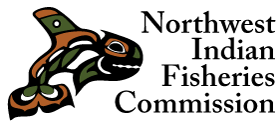Treaty Tribes, State Develop Salmon Seasons That Protect Weak Wild Stocks
Categories: News
OLYMPIA – State and tribal salmon co-managers have crafted a conservation-based package of fisheries for 2009 that will protect weak wild runs while providing limited harvest for treaty tribal and state sport and commercial fisheries.
This year marks the 25th anniversary of the annual cooperative season-setting process known as North of Falcon. The name refers to a cape on the northern Oregon coast that marks the southern boundary of where the treaty tribes and the states of Washington and Oregon cooperatively manage fisheries.
“We created North of Falcon a quarter century ago to work cooperatively for the benefit of the salmon resource, as well as Indian and non-Indian fishermen,” said Lorraine Loomis, Swinomish tribal fisheries manager and tribal North of Falcon coordinator. “The tribes are just as committed to the process today as we were then, because it works.”
Tribal and state fishery managers are expecting strong coho runs this year to the Columbia River and many of Washington’s coastal rivers, including the Hoh and Quillayute. For Puget Sound, millions of pink salmon are forecasted to return to the region’s rivers, although chinook and coho runs are expected to be slightly down this year.
Based on those projections, state and tribal fishers will have opportunities to fish for salmon this summer, but many fisheries will be constrained to protect wild salmon listed under the federal Endangered Species Act (ESA), especially Puget Sound chinook.
“The North of Falcon process has been a success because we make conservation of wild salmon populations our highest priority, while designing fisheries that respect the needs of the tribes and the state in sharing the harvest opportunity,” said Phil Anderson, interim director of the Washington Department of Fish and Wildlife.
State and tribal cooperation also is the key to addressing one of the most pressing needs of salmon, which is more high quality salmon spawning and rearing habitat, Anderson and Loomis said.
“Natural salmon production is disappearing along with the habitat,” Loomis said. “Protecting and restoring habitat are two of the keys to salmon recovery.”
(END)
For more information, contact: Pat Pattillo, WDFW, (360) 902-2705. Tony Meyer, NWIFC, (360) 438-1180

Comments are closed.